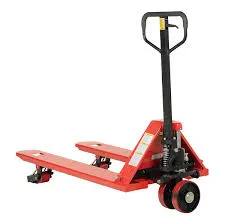


Understanding the 750kg Lever Block An Essential Tool for Heavy Lifting
In various industries, the need to lift heavy loads efficiently and safely is of paramount importance. One tool that has consistently played a vital role in achieving this is the lever block, particularly the 750kg lever block. This mechanical device is designed to make lifting heavy items easier and safer, providing both strength and precision.
A lever block, also known as a chain hoist, utilizes the principle of leverage to lift heavy objects. It consists of a block and tackle system that incorporates a chain, a hook for attachment, and a lever handle to activate the lifting mechanism. The 750kg model indicates its maximum load capacity, making it suitable for a range of industrial applications, construction projects, and even for use in warehouses.
How Does a Lever Block Work?
The operation of a lever block is relatively straightforward. When the user pulls down on the lever handle, it engages the chain, lifting the load that is attached to the hook. The mechanical advantage provided by the arrangement of pulleys allows the user to lift loads heavier than they could manage manually. For example, pulling the lever just once might lift 750kg, which would be impossible to do without mechanical assistance.
The lever block is often constructed from durable materials to ensure longevity and reliability, especially when handling heavy loads. The chain is typically made from high-strength steel and is designed to withstand the considerable stress it endures during operation. Safety is a significant consideration; thus, many lever blocks come equipped with additional safety features like hooks with safety latches, which prevent slippage of the load.
Applications of the 750kg Lever Block

The versatility of the 750kg lever block makes it an invaluable tool across various sectors. In construction, it is commonly used for lifting heavy materials such as beams, steel plates, and concrete blocks. Similarly, in warehouses and storage facilities, lever blocks facilitate moving large items efficiently and safely, optimizing storage space and ensuring the careful handling of goods.
Moreover, the mechanical advantage offered by the lever block can drastically reduce the physical strain on workers. This reduction in manual labor not only enhances productivity but also minimizes the risk of workplace injuries, promoting a safer working environment.
Choosing the Right Lever Block
When selecting a lever block, it is crucial to consider several factors beyond just the weight capacity. The height of lift, the type of load to be lifted, and the environment (e.g., indoor or outdoor use) all play critical roles in determining the appropriate model. For example, some lever blocks feature a compact design, making them ideal for tight spaces, while others may have extended lifting chains for higher loads.
Additionally, understanding the maintenance requirements of a lever block is essential. Regular inspections and proper lubrication can prolong the lifespan of the device, ensuring safe and efficient operation over time.
Conclusion
In summary, the 750kg lever block is a powerful, essential tool for lifting heavy loads across various industries. Its combination of mechanical advantage, safety features, and durability makes it an indispensable asset for construction, warehousing, and other sectors requiring reliable lifting solutions. As industries continue to evolve and the demand for effective lifting equipment grows, the lever block will remain a fundamental part of lifting operations, ensuring that heavy lifting is neither cumbersome nor hazardous.



